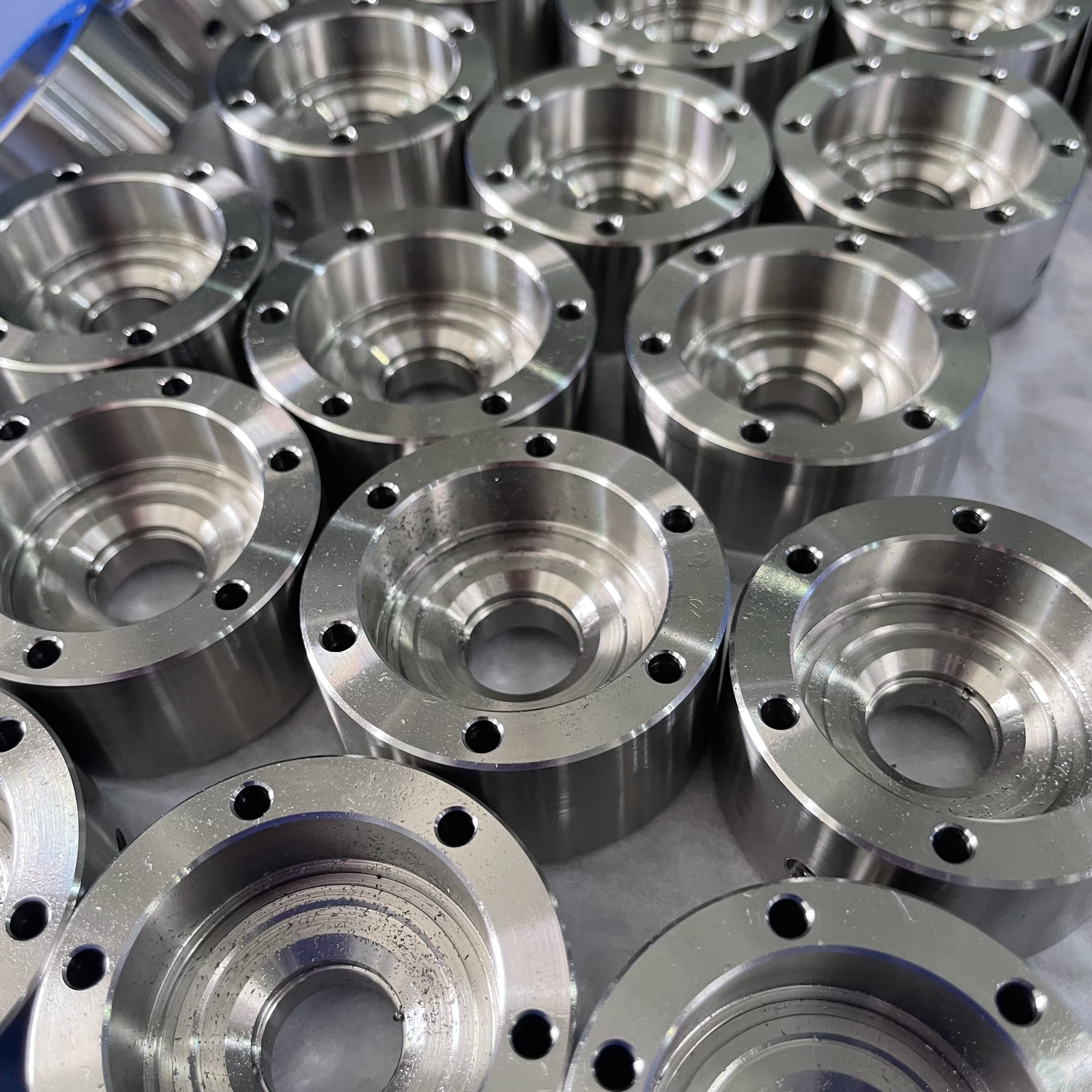Inside CNC Processing: Unveiling the World of Digital and Intelligent Manufacturing

Exploring the Basics of CNC Processing
In the realm of modern manufacturing, CNC processing stands as a cornerstone of digital and intelligent production. But what exactly is CNC processing, and how has it evolved over time?
What is CNC Processing?
Definition and Core Principles
CNC processing, or Computer Numerical Control processing, refers to the automated control of machining tools and 3D printers by means of a computer. This method replaces manual operation with pre-programmed commands, enabling precise and efficient production processes. The core principles revolve around automation, accuracy, and repeatability, making it an indispensable technology in various industries.
The Evolution of CNC Technology
The roots of CNC technology can be traced back to the late 1940s when John T. Parsons developed numerical control (NC) to produce helicopter rotor blades. Over the decades, advancements in computer science and engineering have propelled CNC technology into new frontiers, revolutionizing manufacturing capabilities across the globe.
The Components of a CNC Machine
Hardware: From Spindles to Controllers
A typical CNC machine comprises several essential hardware components, including spindles for cutting or drilling, tool changers for versatility, and controllers that interpret programming instructions. These elements work in harmony to execute intricate tasks with speed and precision.
Software: Programming for Precision
On the software front, CNC machines rely on specialized programming languages such as G-code to dictate tool movements and operations. This programming prowess enables manufacturers to achieve unparalleled precision and intricacy in their production processes.
The Role of Digitalization in CNC Processing
As the landscape of manufacturing continues to evolve, the integration of digitalization plays a pivotal role in propelling CNC processing into the realm of digital and intelligent manufacturing.
The Digital Twin Revolution
A significant advancement in the domain of digitalization is the emergence of the digital twin concept. This revolutionary approach, pioneered by industry leaders such as Siemens AG and DMG MORI, involves creating virtual replicas of physical machines and processes. These digital twins serve as real-time simulations that enable manufacturers to monitor, analyze, and optimize production operations with unparalleled precision. By leveraging digital twins, manufacturers can achieve enhanced efficiency and precision throughout the entire production lifecycle.
The Integration of Industry 4.0 Technologies
In tandem with the digital twin revolution, CNC processing is witnessing a profound transformation through the integration of Industry 4.0 technologies.
IoT and Big Data in CNC Manufacturing
The infusion of Internet of Things (IoT) technology into CNC manufacturing has ushered in an era of interconnected devices and data-driven decision-making. Through IoT-enabled sensors and devices, manufacturers can gather real-time data on machine performance, production metrics, and environmental conditions. This influx of big data empowers manufacturers to gain valuable insights, optimize processes, and drive continuous improvement initiatives.
The Role of Cloud Computing
Cloud computing has emerged as a cornerstone technology in modern CNC processing. By harnessing cloud-based platforms, manufacturers can seamlessly store, access, and analyze vast amounts of production data from anywhere in the world. This capability not only facilitates remote monitoring and diagnostics but also enables collaborative optimization efforts across distributed teams.
Innovations Shaping the Future of CNC Processing
As CNC processing continues to advance, new innovations are shaping the future of manufacturing, ushering in an era of unprecedented efficiency and sustainability.
The Advent of AI in CNC Manufacturing
The integration of Artificial Intelligence (AI) into CNC manufacturing processes marks a significant leap forward in the industry's technological landscape. One notable application is AI-driven predictive maintenance, where machine learning algorithms analyze equipment performance data to forecast potential issues before they occur. This proactive approach not only minimizes downtime but also extends the lifespan of critical machinery, optimizing overall operational efficiency.
Moreover, AI is revolutionizing production processes through machine learning algorithms that continuously analyze and optimize machining parameters. By leveraging historical data and real-time feedback, CNC machines can autonomously adjust cutting speeds, tool paths, and other variables to maximize precision and productivity. This adaptive capability paves the way for unparalleled levels of manufacturing optimization and quality control.
Sustainable Manufacturing and CNC
In response to global environmental concerns, sustainable practices are becoming increasingly intertwined with CNC processing, driving the development of energy-efficient solutions and waste-reducing initiatives.
Energy-Efficient Machines and Processes
Manufacturers are embracing energy-efficient technologies to minimize power consumption during CNC operations. Advanced spindle designs, coupled with intelligent power management systems, enable CNC machines to optimize energy usage without compromising on performance. Additionally, the integration of regenerative braking systems allows machines to recover and reuse energy during deceleration phases, contributing to substantial reductions in overall power consumption.
Reducing Waste and Embracing Renewable Energy
Another pivotal aspect of sustainable manufacturing involves reducing material waste and embracing renewable energy sources. Through advanced material utilization strategies and precision cutting techniques, manufacturers can minimize raw material wastage while maintaining high production yields. Furthermore, the adoption of renewable energy sources such as solar and wind power for CNC operations aligns with environmentally conscious practices, fostering a more sustainable approach to industrial manufacturing.
The Impact of Intelligent Manufacturing on CNC Processing
In the realm of modern manufacturing, the advent of intelligent manufacturing has profoundly transformed the landscape of CNC processing, ushering in a new era of efficiency and innovation.
Transforming Manufacturing with Smart Factories
The integration of automation and robotics has revolutionized traditional manufacturing processes, paving the way for smart factories that operate with unparalleled precision and productivity. Automated assembly lines equipped with robotic arms and advanced machinery exemplify the seamless synergy between digital technologies and manufacturing prowess. These smart factories not only streamline production workflows but also ensure consistent quality control, driving operational excellence across diverse industrial sectors.
Moreover, real-time data analytics have emerged as a cornerstone of intelligent manufacturing, empowering decision-makers to harness actionable insights for process optimization and strategic planning. Through interconnected sensor networks and data visualization tools, manufacturers can monitor production metrics, equipment performance, and resource utilization in real time. This data-driven approach enables agile decision-making, proactive maintenance strategies, and adaptive production methodologies, setting new standards for operational agility in CNC processing facilities.
The Future of CNC Processing
As intelligent manufacturing continues to redefine industrial paradigms, several compelling trends are poised to shape the future of CNC processing. From the widespread adoption of advanced robotics to the proliferation of AI-driven predictive maintenance solutions, the industry is on the cusp of unprecedented technological advancements.
Furthermore, as manufacturers gear up for the next industrial revolution, preparations encompass embracing cutting-edge digitalization strategies, fortifying cybersecurity measures, and fostering a culture of continuous innovation. By staying attuned to emerging trends and proactively adapting to technological disruptions, CNC processing facilities can position themselves at the forefront of digital and intelligent manufacturing evolution.
See Also
Journeying Through CNC Advancements and Applications in Manufacturing
Exploring Cutting-Edge Technology in CNC Processing Facilities
Diving into Precision Engineering with CNC Machines in Electronics
Uncovering the Evolution and Future Trends of CNC Technology
About US
Follow Us
Your prototype holds unparalleled significance, and we deeply value its uniqueness. Collaborating with you during the preparation phase for running your prototype or parts is a commitment we gladly embrace. Whether it's a single part or a complex assembly, we are dedicated to selecting the optimal tools and pathways to bring your envisioned product to life.
At Precision Fab CNC Machining, we specialize in producing parts for prototypes, short runs, and high-volume production. Our prototyping machine capabilities extend across metal, plastic, and wood machining, with welding fabrication services available to complement and finalize your prototype if required.
Address
Address: Room320 10F, Building A,Nanshan international building, Dayawan District, Huizhou, Guangdong, 516001 China
Contacts
billy@timaycnc.com

